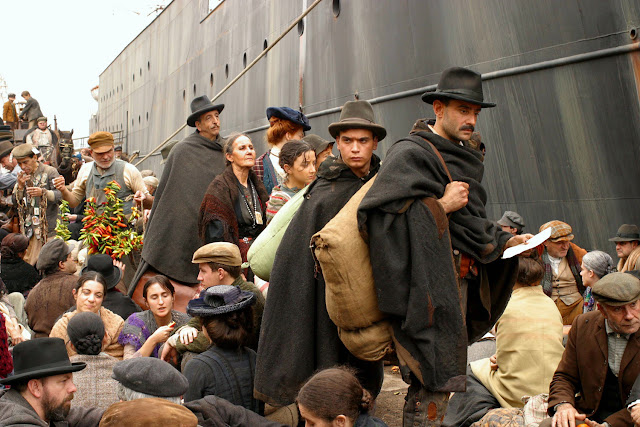 |
| Emanuele Crialese |
Emanuele Crialese is one of the most inventive and poetic filmmakers working today. The messages in his films speak to the dreams and desires within the soul, and their breathtaking cinematography reveals the pride he feels for a land to which he is deeply connected.
Born in Rome in 1965, Emanuele Crialese’s Sicilian roots are the driving force to the plots of his movies. Crialese earned his degree at New York University’s Tisch School of the Arts. He originally set out to take a short film course at the university but was granted a full scholarship after presenting a sample of his work. Much of Crialese’s career has been dedicated to exploring the plight of the immigrant, and the irony of this lies within the fact that while in New York City attending film school, he lived in a Lower East Side tenement, which was once occupied by immigrants during the immigration wave of the 20th century. One has to wonder if that experience has had any influence on his work today. Crialese made a number of short films during his years in New York, and then made his first feature in 1997. The film, "Once We Were Strangers," is about a Sicilian man living illegally in New York wandering from job to job when he falls in love with a local radio show host. The story follows the lives of a number of immigrants living in New York including those from India. The film is about the culture clashes and expectations of immigrants coming to America in search of a better life.
Upon his return to Italy, Crialese made the visually stunning masterpiece, "Respiro." Staring Valeria Golino and Vincenzo Amato, the film was shot on the Sicilian island of Lampedusa and tells the story of a not so traditional mother and wife who struggles with meeting the demands of a politically correct society in a village where everyone knows your business. It's a story of freedom, self-expression and love that was shot in a place as close to paradise as one can get. The film has been a huge international success thanks to its beautiful landscapes and timeless story.
 |
| Nuovomondo His next film "Nuovomondo" (Golden Door), was released in 2006, and again focuses on the Sicilian culture. This time, Crialese travels back to the beginning of the 20th century and examines the experience of immigration to the United States from the perspective of Sicilian peasants. It's a beautiful yet heartbreaking portrait of an immigrant faced with the daunting task of leaving his home forever. It's an emotional journey through the eyes of a man trying to make a better life for his family. The film gives insight into the conditions and struggles that our own ancestors must have faced when making that life-changing decision so many generations ago. Crialese has said that he found inspiration to write the story when he visited Ellis Island back in the '90s and saw photographs of people “looking into the camera as though it was a strange instrument.” Those images made him fantasize about the immigrants’ past and culture. He started to research the topic and discovered a passion for the story which ultimately led him to make this film. Part of that research included reading letters the immigrants sent home. He wanted to make a film about “the kind of man who was willing to cross the ocean to go to an unknown place.”
Perhaps he kept that research in mind when making his latest film, "Terraferma." It's another work that deals with the topic of immigration. This time, however, the immigrants are not Italian. The film tackles Italy’s current issue with clandestine immigrants. The plot explores the moral side of the issue when a Sicilian family helps save an immigrant mother and child from drowning and takes them into their home. Such practice is illegal and the family faces criminal charges. The screenplay was articulately written and directed as Crialese shows the growing problem of illegal immigration from multiple angles. The film premiered at last year’s Venice Film Festival and took home a Special Jury Prize. It was also Italy’s submission for the 2011 Academy Awards, but unfortunately was not on the final ballot. |
 |
| Terraferma |
Crialese is such a relevant filmmaker because his work shows the ideals of a country that is anchored in tradition while exploring the current issues of its modern inhabitants. He does so in a unique way that captures the physical, magical and emotional aspects of Sicily’s Mediterranean beauty.
Comments
Post a Comment